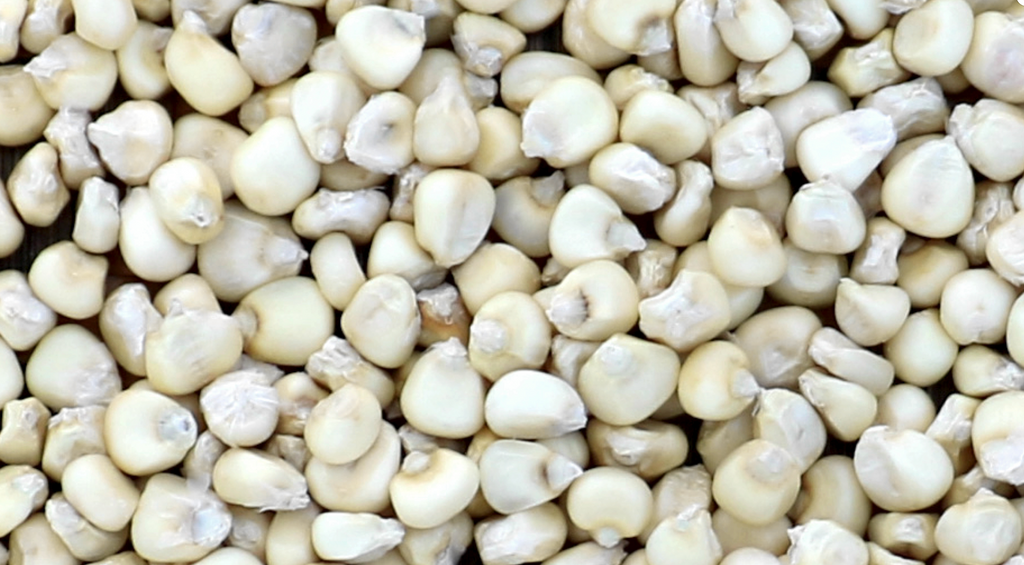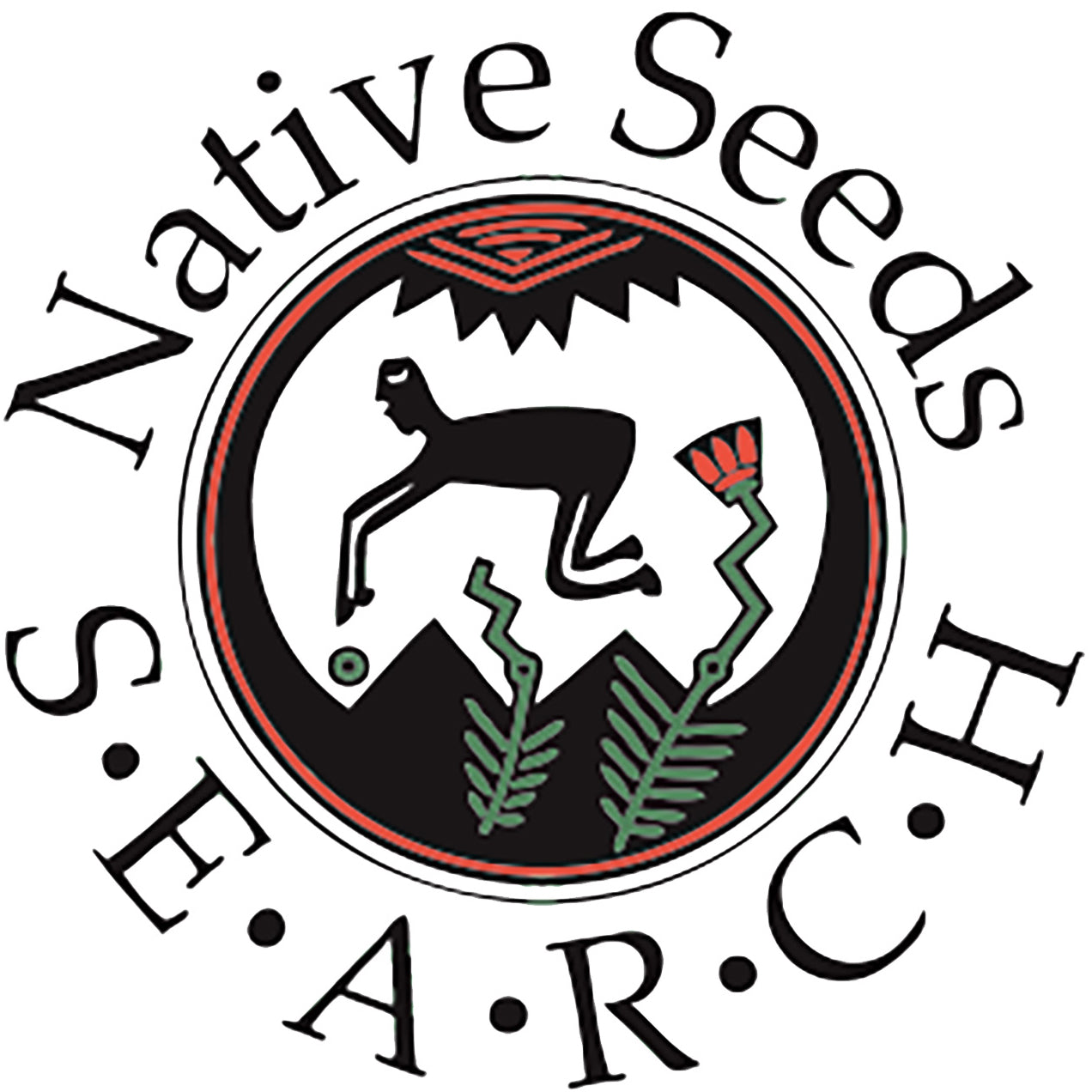
By Sheryl Joy, Collections Curator.
It may not be as colorful and photogenic as some, but this corn is truly a star. Among the most unique and important low desert crops in the NS/S collection are accessions of 60-day corn varieties from the Tohono O'odham and Akimel O'odham people. These fast growing, short-stature corn varieties go from planted seed to harvestable green corn in about 60 days when planted in the heat and humidity of the southwestern monsoon season. For comparison, it takes many other varieties of Southwestern corns about 75 or more days to be harvested in the green corn stage. This characteristic is important for arid land crops because much less water is required to produce a crop than many longer season corn varieties.
O'odham farmers developed this amazing corn and ALSO a way of processing it that makes the most corn with the smallest water inputs -- and tasty corn at that. This particular variety of 60-day corn is a flour or flour-flint corn. In Sonoran Desert country, one can never be sure there will be enough rain to keep the plants alive and healthy till they are fully mature and the kernels dried. An elegant O'odham solution is to harvest the corn in the green-corn or milk-stage, identified when the kernels are soft and release a sweet milk when pressed.

This fresh green corn is traditionally roasted over mesquite coals and then sun-dried and stored on the cob. The corn can then be shelled and made into Huun Hahk Chu'i (corn pinole) or Ga'ivsa, which is stone ground. The roasting process converts starch to sugar, gives the kernels a sweet taste and a hard texture that shatters when cracked or ground. Unlike other cornmeal porridges, cooked Ga'ivsa has more body, and a texture like risotto. Both Huun Hahk Chu'i and Ga'ivsa have a wonderful roasted corn flavor with an exceptional sweetness. You can try out these flavors even if you can't grow the corn, by purchasing Ga'ivsa or Huun Hahk Chu'i grown and processed by Ramona Farms, a Native American farming operation in Sacaton AZ.
NS/S is very pleased to offer seed from a new harvest of Pima 60-day corn, a variety associated with the Akimel O'odham and grown at Ramona Farms outside of Sacaton, Arizona at the Gila River Indian Community. It is called Ki:kam Huun, or "corn of the household", an old name that conveys how common the corn once was among O'odham families. Farmer Terry Button says this particular variety has about 20% flint and 80% flour kernels. This gives it the perfect texture for Ga'ivsa, which Terry states is becoming increasingly popular with Southern Arizona chefs and restaurants like Gertrude's at the Desert Botanical Garden, Kai Restaurant at Wild Horse Pass, and more.
Of course, Pima 60-day corn can also be left to ripen and dry on the plants, harvested as dry corn, then ground and used like other flour corn varieties for cornmeal, atole, and so on. And it doesn't exclusively have to be planted at the start of summer monsoon season. At Ramona Farms they also plant a spring crop with irrigation, which takes longer to mature but also produces bigger ears than if planted in June/July. This versatile corn is an important treasure of O'odham culture, and also an important resource for farmers and gardeners in other areas who are facing the drier, hotter, and more unpredictable weather of our changing climate.